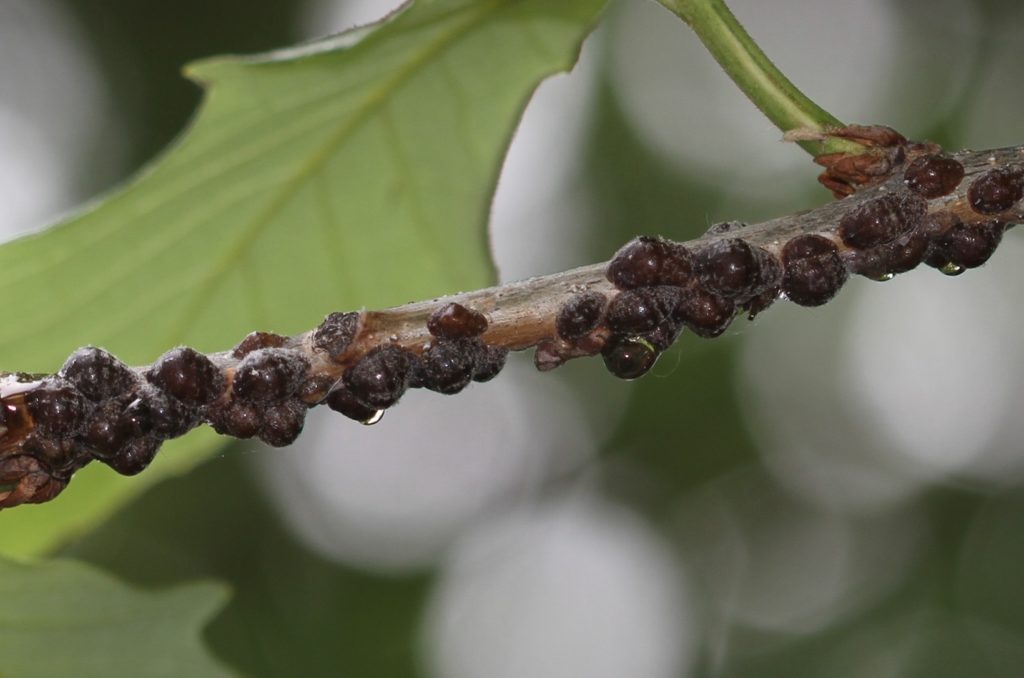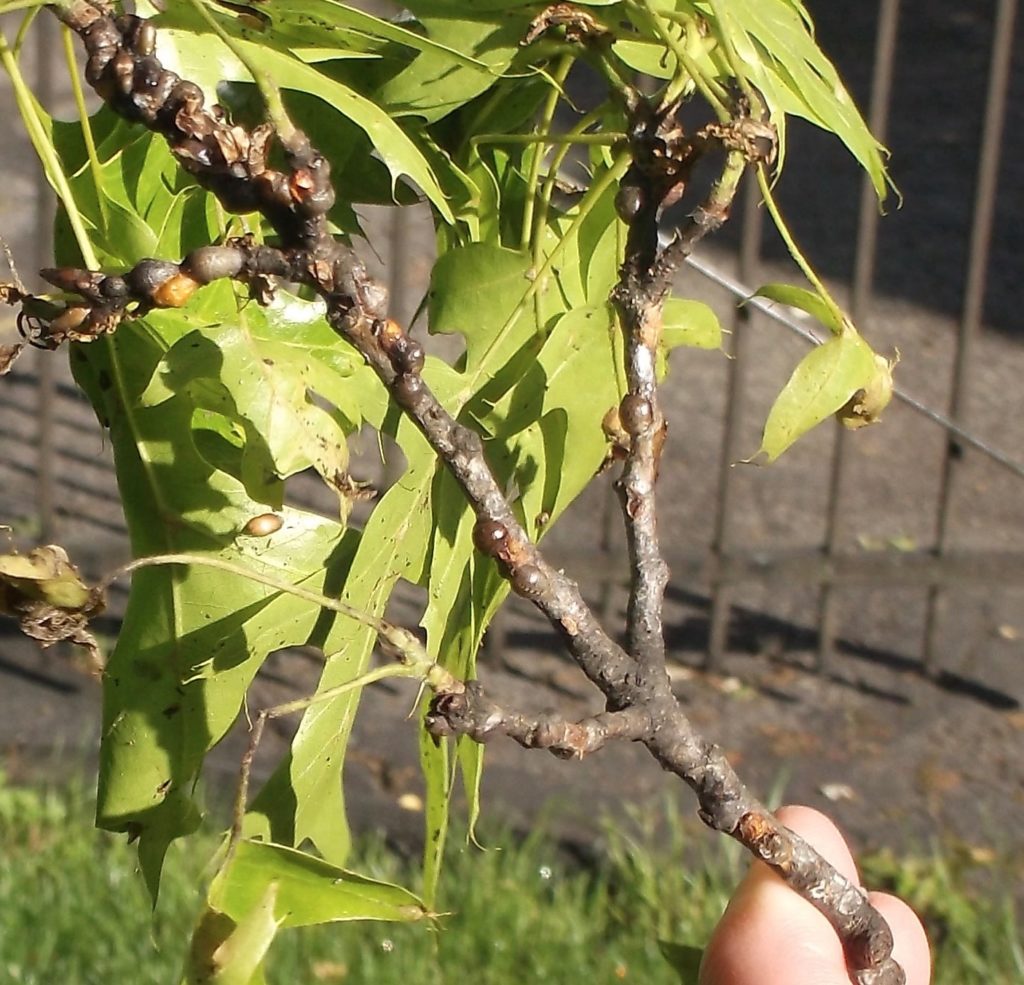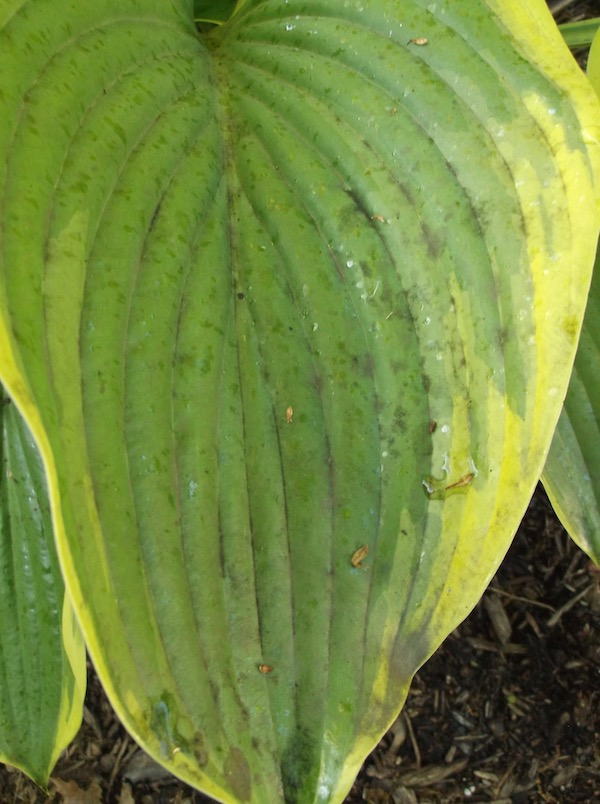This was published originally May 25, 2018
Something unpleasant drips like rain from oaks in Indianapolis. It may have the innocuous-sounding name honeydew, but there’s nothing harmless about it. In fact, let’s just say it’s gross and could be deadly.

Honeydew is sticky, liquid excrement from insects, frequently associated with aphids. In this case, scale is the sap-sucking, insect, which clings or crawls along the stems and branches of plants, dripping honeydew. Scale is in its crawling stage now and the amount of honeydew being dropped on people, cars, sidewalks, patio furniture and plants look like a light rain falling from the trees.
Oak (Quercus spp.) seems to be the species most affected, and Kevin and Anna Flynn in the Meridian-Kessler neighborhood are in their third year of combatting this nuisance. “I get my car washed every day,” said Kevin Flynn. On the hostas under the 70-plus year-old oak, Anna Flynn points to a gray sooty mold that forms from the dripping honeydew.

“It’s nasty,” said Jud Scott, a certified consulting arborist and owner of Vine and Branch tree care company in Carmel. “It’s like glue and it feels like it’s raining. It sits on pool covers, concrete and other surfaces, then turns into a sooty mold.”
There are more than 1,000 species of scale insects, and Purdue entomologist Cliff Sadof is studying this same family of scale (Parthenolecanium) on honeylocusts. Many of these problems are brought on by stress, he said, such as too much or not enough water, temperatures that are too hot or too cold, wind or root-zone soil disturbance from construction.
But Sadof said this scale outbreak is brought on by climate change. “Cities are getting warmer,” he said. The hardscape and pavement contribute to this retention of heat, prompting plants to leaf out earlier. The scale appears and takes hold before natural predators, such as certain wasps or lady beetles, are of sufficient numbers to help control the problem.
What to do
The time to treat scale is in its crawling stage. Scott and Sadof said there are soil drenches homeowners can use or arborists can apply. Safari is one liquid brand, and Bayer Tree & Shrub is another and comes in a granular and liquid form. Late May and early June is when to treat, they said. Always read and follow the label directions.
Scott and Sadof said the liquid is more effective, but takes a few weeks to reach the entire tree. Each of these insecticides is systemic. The scales take in the insecticide as they feed on the sap of the tree’s branches and twigs. Of the two, the Bayer product, which has imidacloprid, has the least effect on other insects, birds and wildlife, Sadof said. Oaks are pollinated by wind and not bees.
It’s also possible to have an arborist apply an insect growth regulator, which is very effective, Sadof said. However, applying the spray to large trees requires special equipment to get high enough to be effective.
Possible deadly nuisance
The dripping honeydew is considered a nuisance, and the scale can eventually cause the death of branches and possibly the tree. The honeydew and resulting mold can be washed off with a power spray.

In researching this column, I found references to people cutting down their decades-old trees because of scale infestations. Other than that, “you’ll never get rid of the scale,” Sadof said. The Flynns said they were exploring all options.